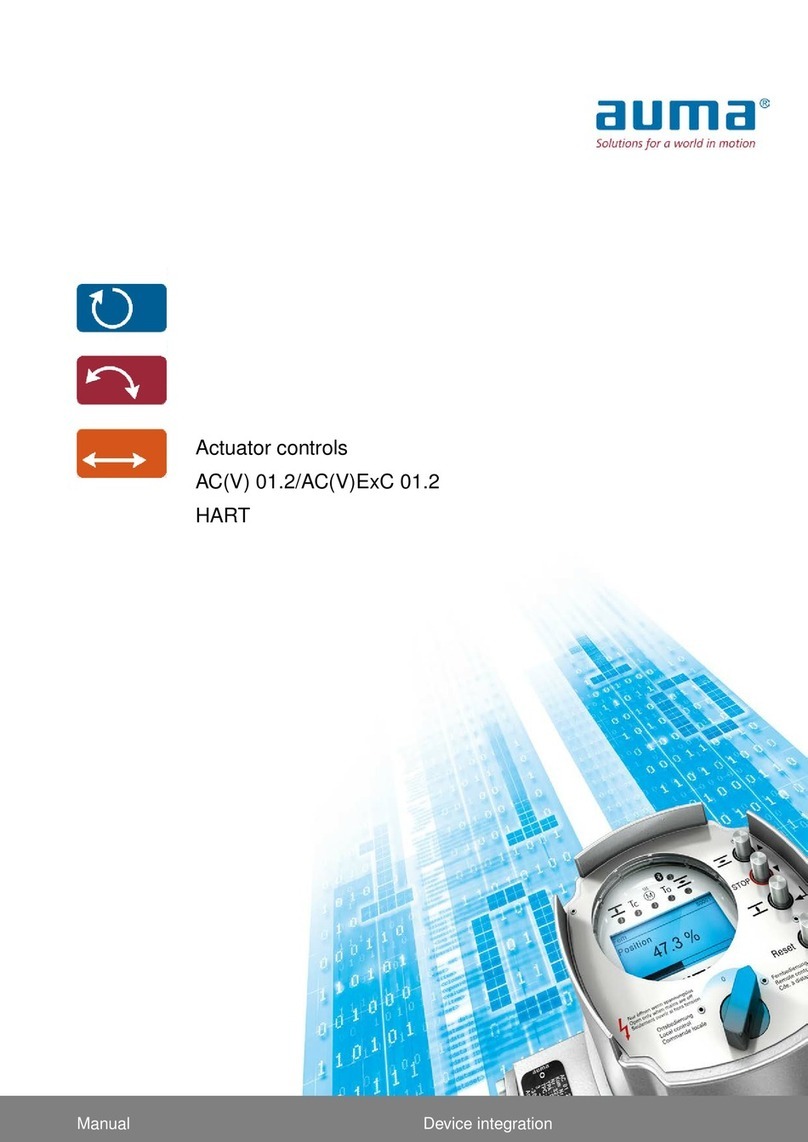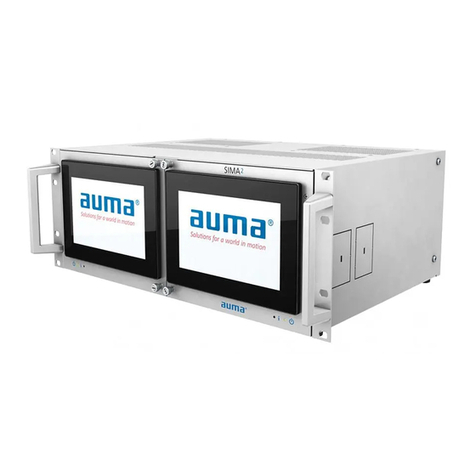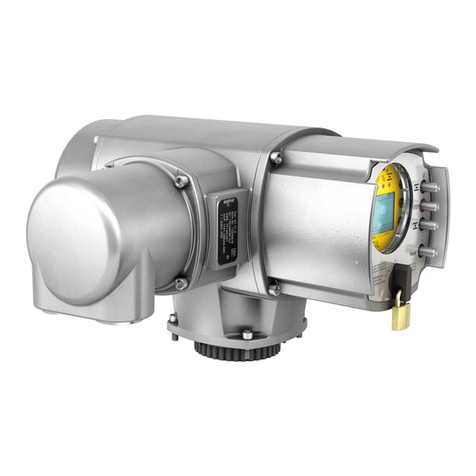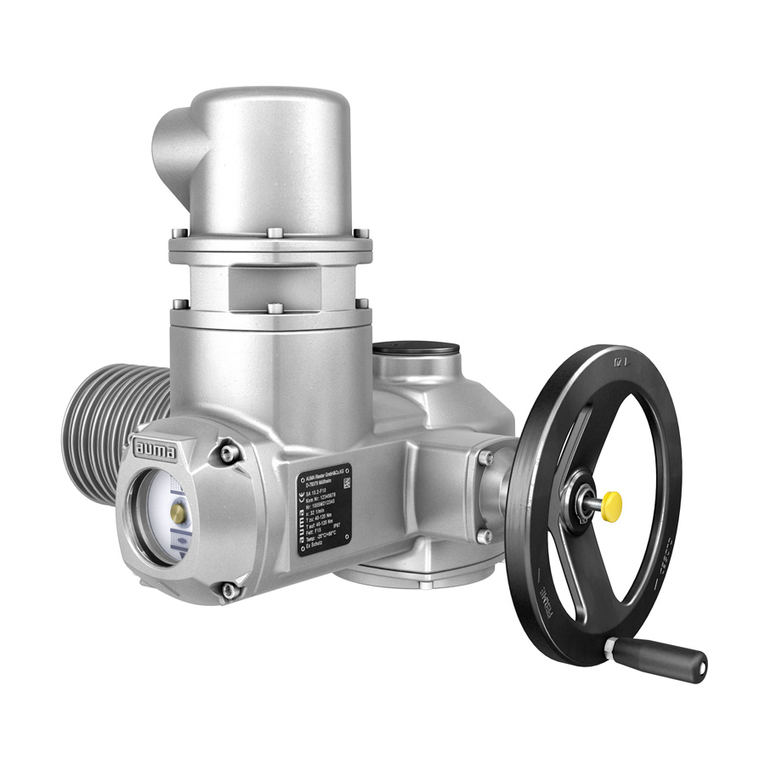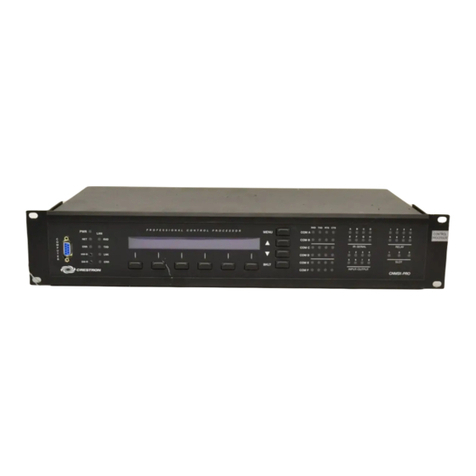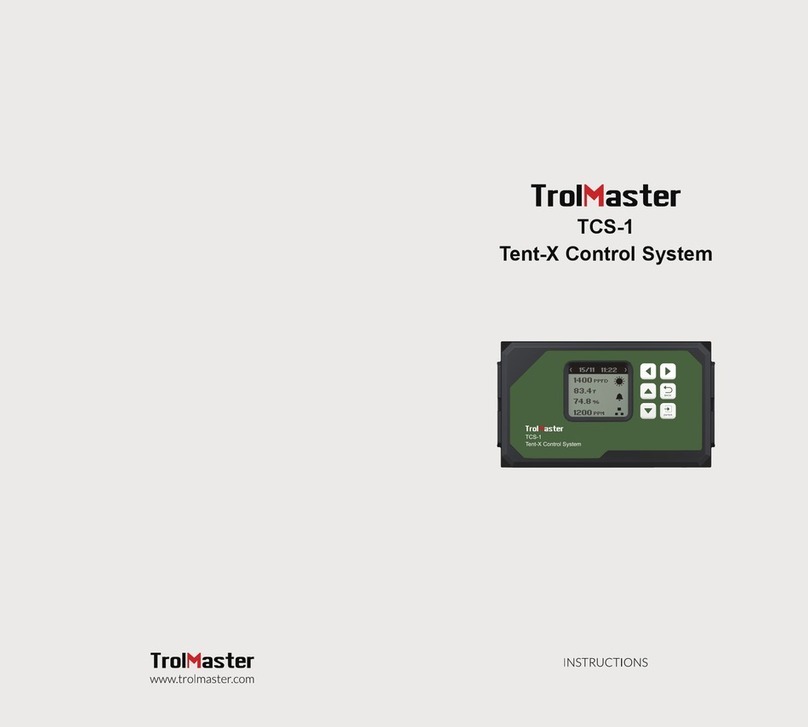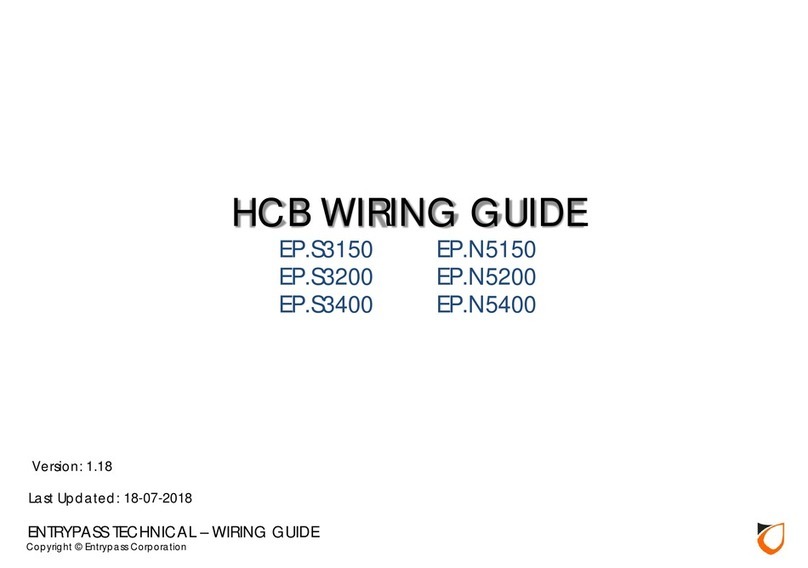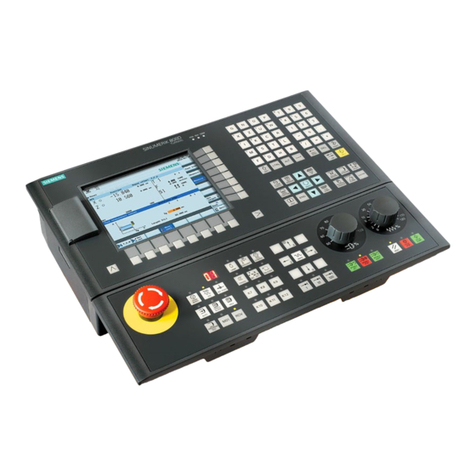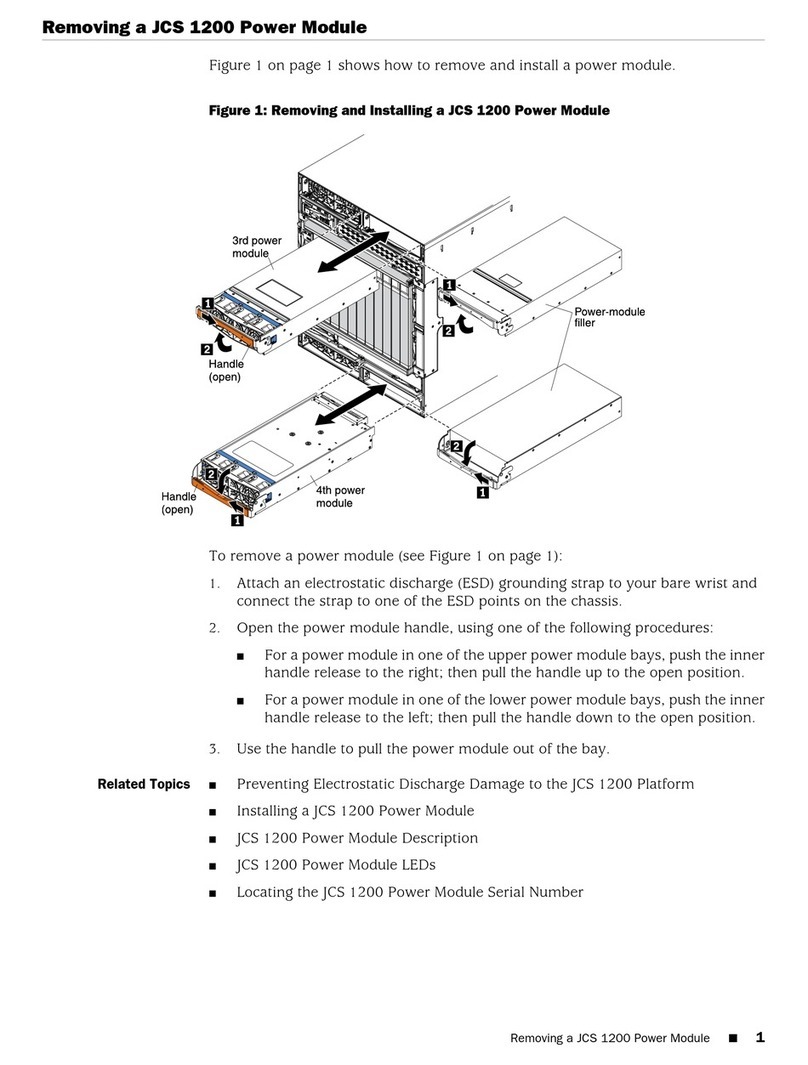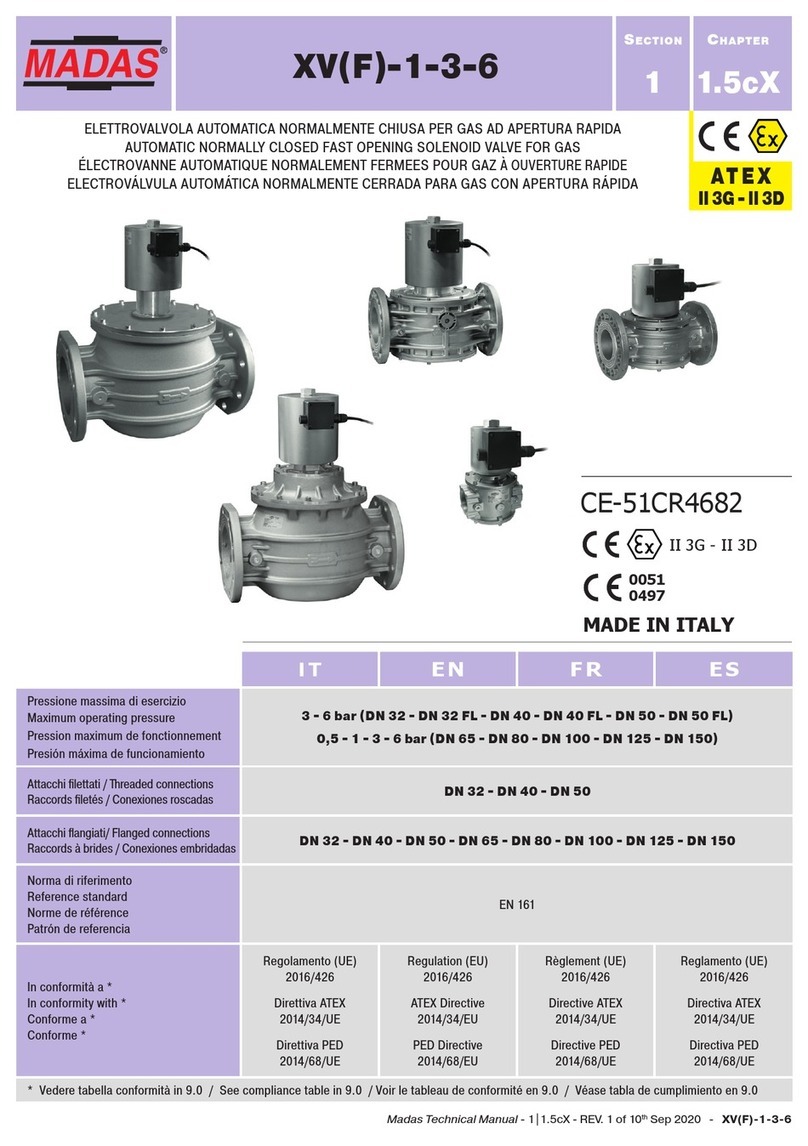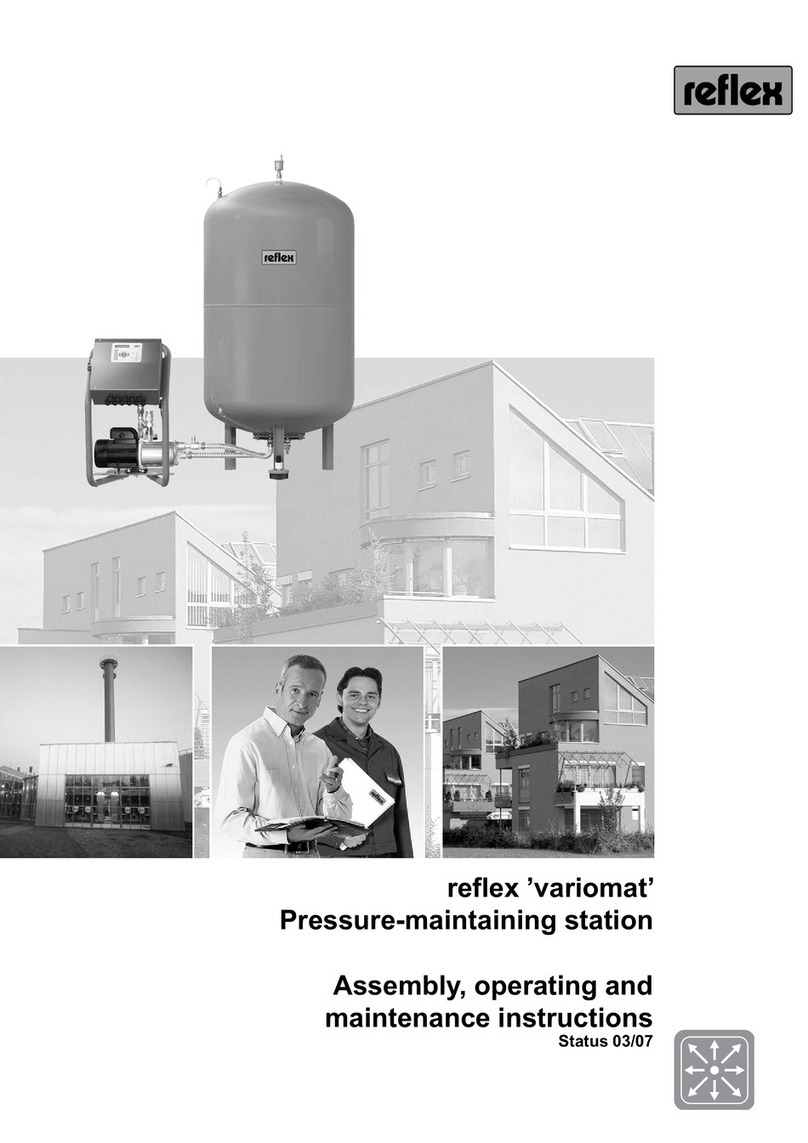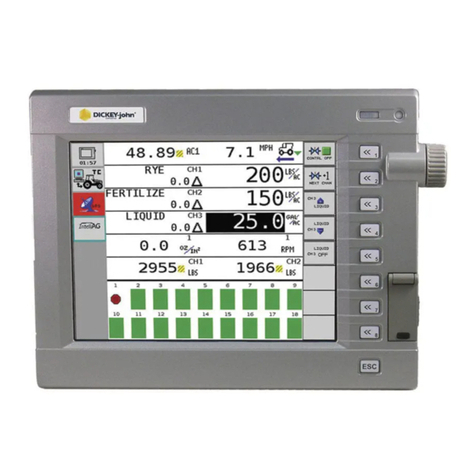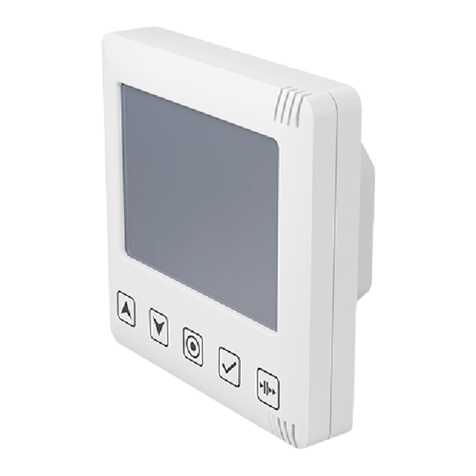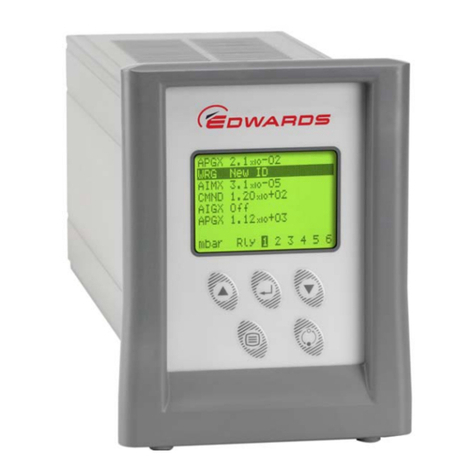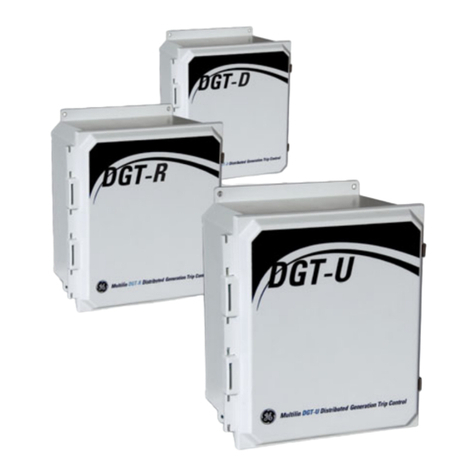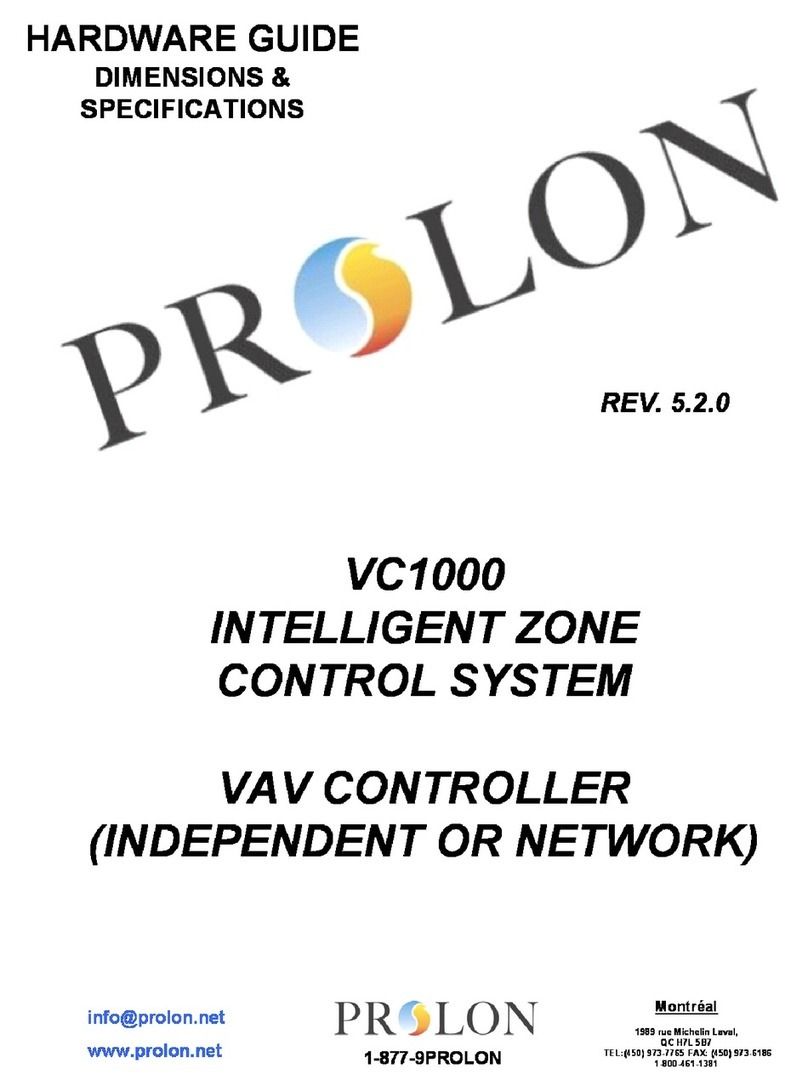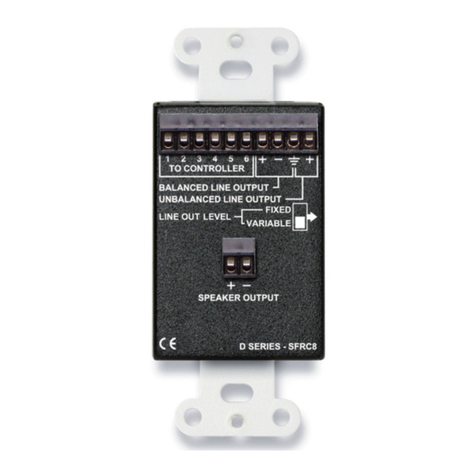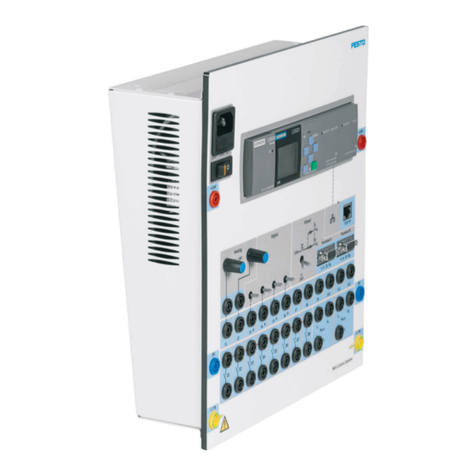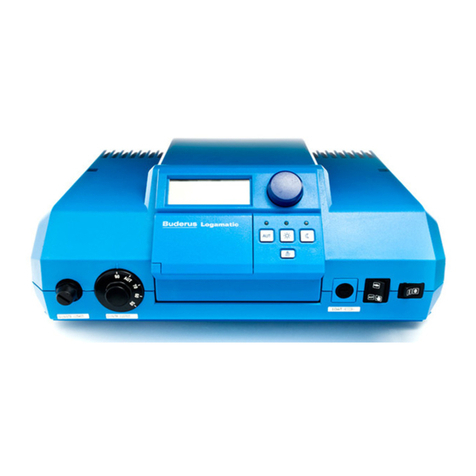AUMA PV1644 User manual

Operation instructions PV1644
Testing device for auma AC control systems
Control system

Page 2
Workbench

Page 3
NOTICE
Read operation instructions first.
•Observe safety instructions.
•These operation instructions are part of the product.
•Retain operation instructions during product life.
•Pass on instructions to any subsequent user or owner of the product.
NOTICE
Warranty claims
Failure to observe these operation instructions voids all warranty claims.

Page 4
TABLE OF CONTENTS
1 Safety instructions ....................................................................................5
1.1 General information on safety.......................................................................................5
1.2 Warnings and notes ....................................................................................................... 6
2 General information ..................................................................................7
3 Important notes .........................................................................................8
3.1 Transport and storage.................................................................................................... 8
3.2 Operating conditions...................................................................................................... 8
3.3 Assembly and commissioning ...................................................................................... 8
3.3.1 Installation (electrical connection) .............................................................................8
3.3.2 Commissioning ..........................................................................................................9
3.4 Warranty .......................................................................................................................... 9
4 Purpose......................................................................................................9
5 System overview (refer to attachment) .................................................10
5.1 Description of the design.............................................................................................11
5.1.1 The supply module consists of:...............................................................................11
5.1.2 The signal generator comprises: .............................................................................11
5.1.3 Connection of the various power inputs/outputs .....................................................11
5.1.4 Crossbar Xk.............................................................................................................12
5.1.5 Connection box Xk ..................................................................................................12
5.1.6 Crossbar Xa.............................................................................................................13
5.1.7 Connection box Xa ..................................................................................................13
5.1.8 Measuring and control module, load/ DVM/oscilloscope ........................................13
5.1.9 Load module............................................................................................................14
6 Working with PV 1644 .............................................................................14
7 Technical data .........................................................................................15

Page 5
1 Safety instructions
1.1 General information on safety
Standards/directives
AUMA products are designed and manufactured in compliance with recognised standards and
directives. This is certified in a declaration of incorporation and a declaration of conformity.
The end user or the contractor of the plant must observe national laws and regulations
regarding assembly, electrical connection, and commissioning on site.
Safety instructions/warnings
All personnel working with this device must be familiar with the safety and warning instructions
in this manual and observe the instructions given. Safety instructions and warning signs on the
device must be observed to avoid personal injury or property damage.
Qualification of staff
Assembly, electrical connection, commissioning, operation, and maintenance must be carried
out exclusively by suitably qualified personnel having been authorised by the end user or
contractor of the plant only.
Prior to working on this product, the staff must have thoroughly read and understood these
instructions and, furthermore, know and observe officially recognised rules regarding
occupational health and safety.
Commissioning
Prior to commissioning, it is important to check that all settings meet the requirements of the
application. Incorrect settings might present a danger to the application, e.g. cause damage to
the device or the installation.
The manufacturer will not be held liable for any consequential damage. Such risk lies entirely
with the user.
Operation
Prerequisites for safe and smooth operation:
Correct transport, proper storage, mounting and installation, as well as careful commissioning.
Only operate the device if it is in perfect condition while observing these instructions.
Immediately report any faults and damage and allow for corrective measures.
Observe recognised rules for occupational health and safety.
Observe the national regulations.
Protective measures
The end user or the contractor are responsible for implementing required protective measures
on site, such as enclosures, barriers, or personal protective equipment for the staff.
Maintenance
To ensure safe device operation, the maintenance instructions included in this manual must be
observed.
Any device modification requires prior consent of the manufacturer.
No liability can be assumed for inappropriate or unintended use.
Observance of these operation instructions is considered as part of the device's designated
use.

Page 6
WARNING
During electrical operation, certain parts inevitably carry hazardous voltages.
Work on the electrical system or equipment must only be carried out by a
skilled electrician himself or by specially instructed personnel under the control
and supervision of such an electrician and in accordance with the applicable
electrical engineering rules.
1.2 Warnings and notes
The following warnings draw special attention to safety-relevant procedures in these operation
instructions, each marked by the appropriate signal word (DANGER, WARNING, CAUTION,
NOTICE).
DANGER
Indicates an imminently hazardous situation with a high level of risk.
Failure to observe this warning will result in death or serious injury.
WARNING
Indicates a potentially hazardous situation with a medium level of risk.
Failure to observe this warning could result in death or serious injury.
CAUTION
Indicates a potentially hazardous situation with a low level of risk.
Failure to observe this warning may result in minor or moderate injury. May also be
used with property damage.

Page 7
NOTICE
Potentially hazardous situation.
Failure to observe this warning may result in property damage. Is not used for personal
injury.
Arrangement and typographic structure of the warnings
Safety alert symbol (warns of a potential personal
injury hazard).
Signal word (DANGER, WARNING, CAUTION,
NOTICE)
DANGER
Type of hazard and respective source
Possible consequence(s) in case of non-observance (option)
Measure(s) to avoid the danger
Further measure(s)
Caution!
Before opening the control cabinet, the device must be disconnected from line.
When the control cabinet is opened, live parts may be exposed.
Before performing a repair or exchanging parts, the unit must be separated from the circuit.
DANGER
Dangerous voltage at electrical connections
Electric shock possible.
Work on the electrical system or equipment must only be carried out by a skilled
electrician himself or by specially instructed personnel under the control and
supervision of such an electrician and in accordance with the applicable
electrical engineering rules.
A new calibration of the measuring unit can only be performed by trained personnel while
observing the calibration instructions.
2 General information
This device is used to perform functional tests of AUMA control systems

Page 8
3 Important notes
3.1 Transport and storage
•The device can only be transported in designated containers.
The device is protected against normal environmental conditions for approx. 6 months
if stored in undamaged original packings.
•Store in a well-ventilated, dry room.
•Protect against floor dampness by storage on a wooden pallet.
•Cover to protect against dust and dirt.
Long-term storage
If the device must be stored for a long period (more than 6 months), the following points must
be observed in addition:
Prior to storage:
Protect test contacts against corrosion
3.2 Operating conditions
Operation of PV1644 is guaranteed when working in ambient temperatures of 0 – 40 °C.
Fluctuation of the supply voltage is only permissible within the tolerances
TAB/VDE
3.3 Assembly and commissioning
3.3.1 Installation (electrical connection)
The installation of the system is performed by the customer. As an option, system installation
can be performed by AUMA.
When implementing the electrical connection, the following points have to observed:
•Switch off voltage prior to connection
•Operate device on earthed circuits only.
DANGER
Dangerous voltage at electrical connections
Electric shock possible.
Work on the electrical system or equipment must only be carried out by a skilled
electrician himself or by specially instructed personnel under the control and
supervision of such an electrician and in accordance with the applicable
electrical engineering rules.

Page 9
3.3.2 Commissioning
In any case, commissioning must be performed by a member of the AUMA staff.
Prior to commissioning and test run, the following points must be observed:
- Ensure that all electrical connections are correctly wired.
- Ensure that the permissible supply voltages at power and signal plug
connections are not exceeded:
400V AC 3~N,PE
WARNING
During electrical operation, certain parts inevitably carry hazardous voltages.
Work on the electrical system or equipment must only be carried out by a
skilled electrician himself or by specially instructed personnel under the control
and supervision of such an electrician and in accordance with the applicable
electrical engineering rules.
For work on systems with hazardous voltages (e.g. EN 50178) as well for correct use of tools,
the general and regional installation and safety regulations must be met.
3.4 Warranty
AUMA are not liable for damage resulting from:
•non-observance of the operation instructions,
•unsuitable or improper use,
•incorrect installation and/or commissioning by the buyer or
by third parties,
•normal wear and tear
•incorrect or careless handling,
•chemical or electrochemical and electrical influences, as
long as they are not caused by a fault of AUMA,
•improper modifications or repairs by the buyer or third
parties,
•effects of parts which are not AUMA original parts.
•
4 Purpose
This document document describes the use of PV1644. The device is used for performing the
functional tests on AUMA controls, without the use of AUMA actuators.

Page 10
5 System overview

Page 11
5.1 Description of the design
5.1.1 The supply module consists of:
•Main switch
•Main fuses
•Control fuses
•Residual current circuit breaker, 3-phase
•Main contactor
•3-phase AC constant-voltage transformer 0 – 710V, motor operated
•3-phase AC rectifier
The module is used for provision and distribution of the voltages and currents required
for the system. The system may provide maximum 2 A current of both AC and DC.
5.1.2 The signal generator comprises:
•Motor controlled AC transformer with a adjustment range of 0 – 230 V
•Rectifier
•Change-over contactors/relays for 1-ph AC/3-ph AC and DC.
. The system may provide maximum 1A current of both AC and DC voltage.
It is used to provided the required control voltage in the three current types mentioned.
5.1.3 Connection of the various power inputs/outputs
This unit implements the connections required using power contactors.

Page 12
5.1.4 Crossbar Xk
The crossbar is controlled via an USB module within the control computer.
The code from the USB module is transformed into an I²C bus signal.
This signal controls the individual relays on the relay board. Control is performed in
series.
The crossbar may apply 32 different signals to a test pin.
Up to 64 different pins can be switched, whereas 56 pins have been assigned different
functions.
The test bench uses the crossbar to communicate with the test specimen.
Assigment list Xk
No.
Function
No.
Function
No.
Function
1 + Cont. Volt. 0-230VAC 13 Digit. Input 9 25 Bus 2A
2 - Cont. Volt. 0-230VAC
14 Digit. Input 10 26 Bus 2B
3 +Contr. Volt24VDC 15 Digit. Input 11 27 Burdon1
4 -Contr. Volt24VDC 16 Digit. Input 12 28 Burdon 2
5 Digit. Input 1 17 + ana. Nom.Value 29 Oszi Channel 1
6 Digit. Input 2 18 - ana. Nom.Value 30 Oszi Channel 2
7 Digit. Input 3 19 Analog GND 31 Diag FOC
8 Digit. Input 4 20 + ana. actual.value 32 0V E1/E2 0-20mA
9 Digit. Input 5 21 - ana. actual.value
10 Digit. Input 6 22 Pot. free Link
11 Digit. Input 7 23 Bus 1A
12 Digit. Input 8 24 Bus 1B
5.1.5 Connection box Xk
To facilitate troubleshooting, all 56 signals
(50 from the crossbar and six from the power module) are connected to
test terminals at connection box Xk. Therefore, the signals can be interrupted manually
or the current can be measured.

Page 13
5.1.6 Crossbar Xa
The crossbar is controlled via an USB module within the control computer.
The code from the USB module is transformed into an I²C bus signal.
This signal controls the individual relays on the relay board. Control is performed in
series.
The crossbar may apply 32 different signals to a test pin.
Up to 64 different pins can be switched, whereas 56 pins have been assigned different
functions.
The test bench uses the crossbar to communicate with the test specimen.
Assigment list Xa
No.
Fu
nction
No.
Function
No.
Function
1 DSR NC Contact 13 NTC 2.1 25 Spare
2 DSR NO Contact 14 NTC 2.2 26 Spare
3 DÖL NC Contact 15 Pot. Wiper(0-5V) 27 Spare
4 DÖL NO Contact 16 0V analoque 28 Spare
5 WSR NC Contact 17 DVM +Input 29 Spare
6 WSR NO Contact 18 DVM - Input 30 Spare
7 WÖL NC Contact 19 Output 0-20mA + 31 Spare
8 WÖL No Contact 20 Output 0-20mA - 32 Spare
9 Blinker Contact 21 Bus A
10 Thermo Contact 22 Bus B
11 NTC 1.1 23 + 24VDC
12 NTC 1.2 24 0 VDC
Crossbar Xa is used for simulating the characteristics of any actuator
For test specimen with MWG, one MWG for AC .1 and AC .2 each can be connected
instead of limit and torque switches.
5.1.7 Connection box Xa
To facilitate troubleshooting, all 56 signals
(50 from the crossbar and six from the power module) are connected to
test terminals at connection box Xa. Therefore, the signals can be interrupted manually
or the current can be measured.
5.1.8 Measuring and control module, load/ DVM/oscilloscope
All signals to be measured are reduced to standardised signals within the hardware of
the test bench and supplied to Beckhof measuring technology.
The signals are 0 – 10 V DC and 0 – 20mA.
The Beckhoff module are connected via Ethernet to the control computer.
The measured results are evaluated within the software of the overall system.

Page 14
As you can see from the assignment list (crossbar Xk), a load/measuring
equipment/oscilloscope may be connected to any channel.
Some of the signals to be verified require the application of a defined load for quality
assessment.
For this, the above mentioned load may be used which can be controlled via USB bus.
At the same time, the signal can be measured via the connectible DVM.
The DVM may also be controlled via USB.
The same applies to the oscilloscope.
The oscilloscope is basically used for assessing the fieldbus signals.
5.1.9 Load module
The load module can be used for simulating actuator functions.
A load of approx. 1A is applied to the test specimen (AUMA MATIC, AUMATIC etc.)
within the power circuit.
This is implemented by power resistors which are controlled in four load steps
depending on the operating voltage.
For test specimen with 3-phase AC, three resistance strands are switched as star; for
1-phase AC and DC test specimens there exist two identical load paths which may be
controlled in 3 steps.
The currents flowing under load are being measured and assessed by the system.
Verification of the correct direction of rotation is also checked within this module.
6 Working with PV 1644
The test is automatically performed, the user is guided by the menu.
(refer to software documentation)
The test bench automatically adapts to the test specimen to be verified.
Relevant information is provided from the datasheet of the test specimen,
by scanning the order/commission number. (IFAX system)
Once the test bench has been configured, the test procedure may start.
Mount the test specimen on the existing quick-release fixtures (spring-type contacts)
and follow the steps indicated in the test menu.
Once the test with good/rejected qualification is complete, the test specimen can be
dismounted and the next test be performed.
Assessment, print out of test results etc. refer to software documentation.

Page 15
7 Technical data
Dimensions (W-H-D) 1760 x 2000x 600 mm control cabinet
Weight approx. 120kg
Ambient temperatures 0 °C to 40 °C
Enclosure protection IP 50
Connection voltage 3Ph 400 V 50 Hz, N, PE Fuse max. 10 A
Power consumption 3 kVA max
Dimensions (W-H-D) 1400 x 2400x 800 mm workplace
Weight approx. 150kg
Ambient temperatures 0 °C to 40 °C
Pneumatic supply 6bar

AUMA Riester GmbH & Co. KG
P.O.Box 1362
D 79373 Muellheim
Tel +49 7631 809 - 0
Fax +49 7631 809 - 1250
www.auma.com
Y005.661/003/en/1.12
For detailed information on AUMA products refer to the Internet: www.auma.com
Table of contents
Other AUMA Control System manuals
